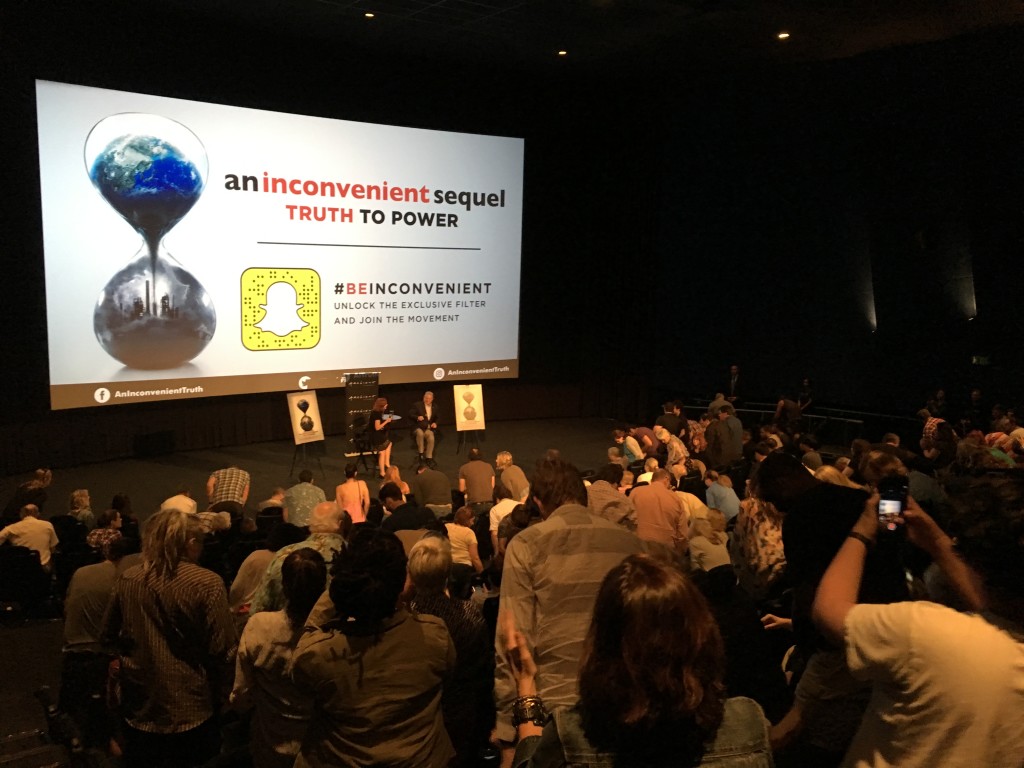It’s 13 years since I first interviewed Marc Morano for my movie, “Sizzle: A Global Warming Comedy.” Last year Nature quantified his media impact and found him to be #1 (by a factor of almost 3) for the climate “contrarians” (the descriptor they chose, rather than “deniers”) and almost as widely covered as the #1 climate scientist. I’ve spent a decade warning about the media power of this guy. Did anyone listen? Perhaps a little. The good news? Maybe he’s slowing down in his speaking speed, from auctioneer to used car salesman.
SOME THINGS NEVER CHANGE, MUCH
What’s different about Marc Morano? In 2007 when I first interviewed him for my movie, “Sizzle: A Global Warming Comedy,” he only had a handful of appearances in major media under his belt.
Now? When I asked him how many times he’s been on Fox News (in the video above), I expected him to say a couple dozen. Look at his answer — hundreds. He’s truly “a regular” there.
Who, among the climate movement, can be called “a regular” on any television network? Being “a regular” on a TV channel is media power, pure and simple.
In 2010 I launched my blog of 4 years, The Benshi, with a lengthy interview of Marc. Two weeks later I offered up my bottom line analysis — that no one should debate him, other than a major comedian like Bill Maher.
Of course, media-obsessed Bill Nye ignored this warning. He was on the board of the Union of Concerned Scientists at the time. My friends there tried to talk to him about this but they told me, “He’s just gonna do what he’s gonna do when it comes to media exposure — he can’t get enough.” In 2012 he debated Morano on CNN with Piers Morgan as host. It wasn’t good.
INTERVIEWING MARC MORANO FOR OUR ABT FRAMEWORK COURSE
We’re in the 5th round of my new ABT Framework Course that my team of 6 associates from our Story Circles Narrative Training program and I put together in April. It’s been popular, running twice with open participation, once with USFWS, once with Park Howell and the business community, and now with the National Park Service, as well as booked into the fall.
The course is 10 one hour sessions. I bring in a series of “likely suspects” as guests in the second half (scientists, filmmakers, actors, political strategists, business consultants, journalists, etc.). But this time decided to spice things up a bit by bringing in an inconvenient guest.
The powers that be got a little nervous at the possibility of a scene. The sessions include a chat log where the participants can type in comments and questions live. We all know the climate issue can get heated, so I opted to avoid potential drama by doing only a recorded interview which was 30 minutes. I cut down the interview to the 13.5 minute clip above which we showed to the course then discussed in depth.
MARC MORANO, THICK-SKINNED VETERAN
When I made my movie, “Sizzle: A Global Warming Comedy,” I ended up trading emails with legendary techno-thriller author-turned-climate “skeptic” (the term of choice at the time), Michael Crichton. He warned me in his first email that what I had experienced for criticism and trolling for my movie “Flock of Dodos,” about the attacks on evolution science, would pale in comparison to doing a film on climate.
He was pretty much right. Lots of scientists and environmentalists said rotten things to me because I gave “screen time” to climate skeptics (though by 6 years later when Robbie Kenner did the same thing with “Merchants of Doubt” where I guided him to Morano, the critics had gone silent — btw, wanna see one interesting detail — look at the Wikipedia page for this film — the two photos are of Oreskes and Singer with Morano getting only a trivial mention as one of the cast — then look at the trailer for the movie — it opens with, has quotes throughout, and ends with one guy — Marc Morano — what does that tell you?).
Some of my critics suggested I was somehow giving climate skeptics a big break. I wasn’t — my film never went much beyond the science world, and having accomplished all the goals I had (made back the money I spent on it, did over 100 public screenings at everywhere from NASA to the Smithsonian, had huge fun, and verified how utterly, utterly, utterly humorless so many environmentalists can be — the number of times my crew in Hollywood sat in our office shaking our heads at angry emails was tragic) I opted to never release it.
But yes, climate is an ugly, intensely polarized issue, that is not helped by the poor communication style of so much of the climate action crowd (exemplified in recent years by their decision to label their opponents as “deniers” in an effort to associate them with Holocaust deniers). Over the years, they have chosen to spew hatred from a distance while failing to ever engage in any sort of sophisticated analysis or experimentation when it comes to communication.
And they wonder why they fail.
MAYBE HE’S AT LEAST SLOWING DOWN
If you watch the video, you’ll see by the end I fall into pretty much of a “here we go again,” routine with him on each issue. I’ve heard it all before. His science on the ocean acidification issue is wrong (there are not as many winners as losers for this issue). His science on the California wild fires is wrong (there’s not much of a climate signal for the fires, but the experts agree there’s at least some). His science on coral bleaching is WAY wrong — trust me on this, I used to be a coral reef scientist, he has zero legs to stand on for this one.
The bottom line is that there is no point in engaging a climate skeptic on CONTENT. The engagement needs to be about FORM. If this isn’t clear to you, take our ABT Framework course.
The climate crowd never did show one ounce of communications savvy. If there’s one core principle to the legendary text, “The Art of War” which has been the bible for Hollywood players for a generation, it’s “Know your enemy.” I’ve seen no evidence of climate activists attempting to know their enemy.
Marc and I have chuckled for years at the complete absence of his opponents knowing much of anything about him. That’s part of why one of my initial questions to him was how much does he make. From the very start of my first getting to know him I’ve listened to environmentalists tell me with complete certainty that if you “follow the money,” you’ll see he’s making millions off of payments from the oil industry.
No, he’s not.
Anyhow, here’s your one silver lining. I timed his WORDS PER MINUTE rate of speaking for my interview with him from 2007. It was 225 WPM. I did the same thing for part of the last bit of this interview, 13 years later. I was a mere 210 WPM (normal conversation is about 150 max).
Maybe he’s slowing with age. Which might mean that some day, the age old “strategy” of climate activists of “Ignore him and he’ll eventually go away,” might finally happen. Maybe sometime around 2050.


